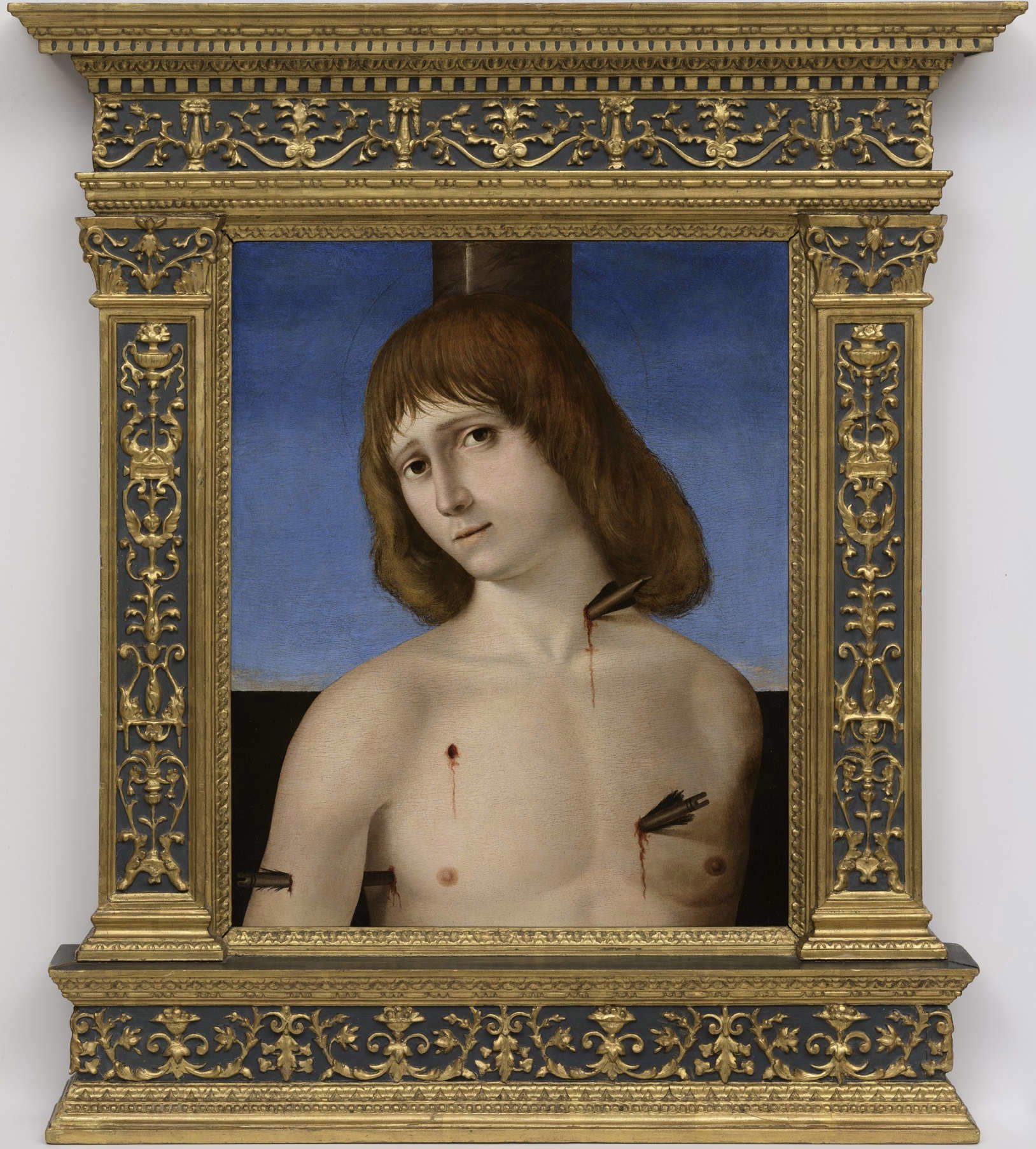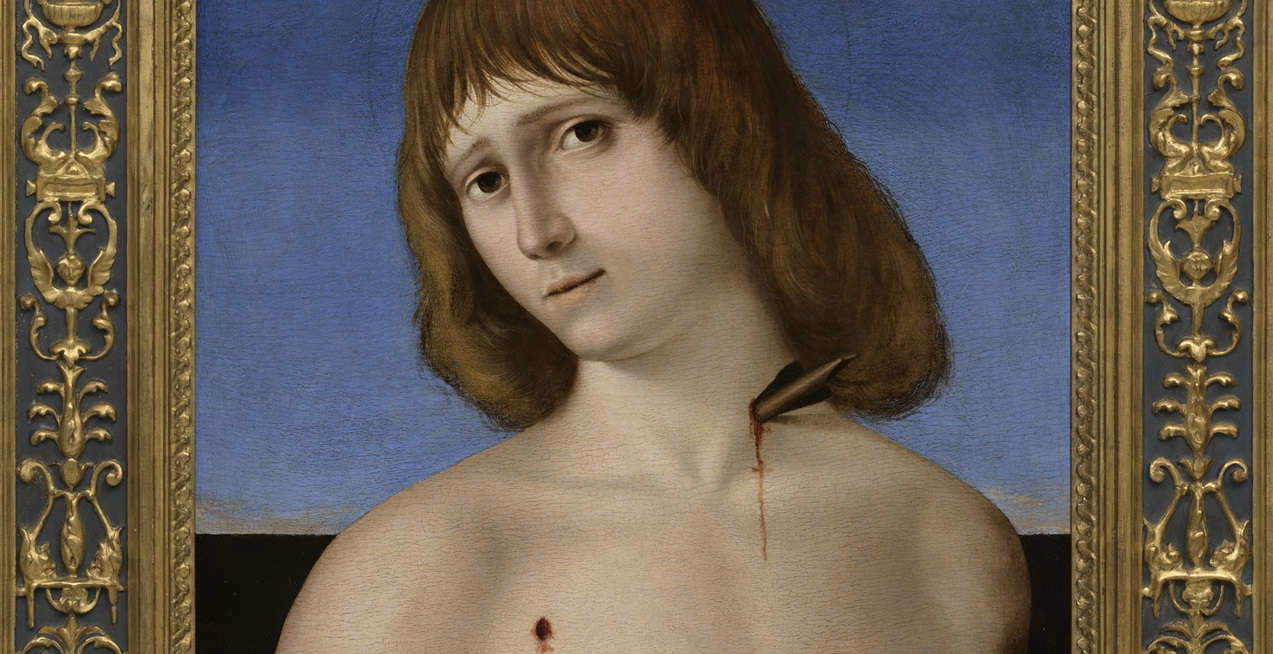The Regional Museum “Accascina” of Messina enriches its collection with a new and significant acquisition: the arrives in the collection the Saint Sebastian by Renaissance painter Antonio de Saliba (Messina, 1466 - 1535), pupil and collaborator of Antonello da Messina. The work will be presented to the public on Thursday, October 2 at 5 p.m., with free admission, in a ceremony that will be attended by institutional representatives and art history scholars. The purchase of the panel, measuring 44 by 36 centimeters, was made possible by theexercise of the right of first refusal by the Sicilian Region’s Department of Cultural Heritage and Sicilian Identity. The work, owned by the Bencivenni family, was on the market: in fact, it was in the possession of the Salamon Gallery in Milan, which followed the mediation. The cost incurred by the Region was 100,000 euros, an investment that makes it possible to bring back to Sicily a significant work of the Renaissance linked to the school of Antonello da Messina. The museum, one of the most important picture galleries in southern Italy, already holds two important works by Antonello: the Polyptych of St. Gregory and the Madonna and Child with a Franciscan in Adoration.
Regional councillor Francesco Paolo Scarpinato emphasized the importance of the acquisition, which strengthens the attractiveness of the Accascina Museum. “We are proud and proud of this acquisition,” said the councillor for Cultural Heritage and Sicilian Identity, Francesco Paolo Scarpinato. “The work will not fail to arouse great interest, but above all, it will increase the museum collection, making the regional gallery in Messina increasingly attractive.”

The painting will be placed in the exhibition area dedicated to Antonello da Messina and his workshop, so as to enhance the iconographic and stylistic links that unite it with the production of the great Renaissance master. In fact, the iconography of De Saliba’s Saint Sebastian recalls a masterpiece by Antonello preserved in Venice, establishing a direct dialogue with works that testify to the spread of Antonello’s language and his influence on his collaborators. The small panel has come down to the present day in its original size, without resizing, and is believed to have been intended for a private client. Its intact preservation enhances its historical and documentary value, offering the possibility to deepen our knowledge of the production of De Saliba, a significant but not yet fully appreciated figure in the southern artistic scene between the 15th and 16th centuries.
Accascina Museum director Marisa Mercurio recounted the steps that led to the entry of the work into the Messina collection: “I followed with trepidation the bureaucratic procedure for the acquisition of the small panel, hoping that nothing would jeopardize the happy conclusion. Thanks to the synergistic work with the art historians, the technicians on duty in this office and the institutions involved, the painting, which represents an important piece of the pictorial culture linked to the school of Antonello, will finally be able to become part of the Messina museum collection.”
In addition to Councillor Scarpinato and Director Mercurio, the Superintendent of Cultural Heritage of Messina, Orazio Micali, and Professor Emeritus of the University of Geneva, Mauro Natale, a well-known scholar of Renaissance, Provençal and Flemish painting, will take part in the official presentation on October 2. The presence of a leading international expert underscores the importance of the acquisition and the desire to place it in a context of scientific research and enhancement.
Antonio de Saliba, author of the panel, was an artist active between the late 15th century and the first half of the 16th century. A nephew of Antonello da Messina, he is traditionally referred to as the son of the master’s sister and Giovanni Saliba. His activity is within the orbit of Antonello’s workshop, whose models and iconography he interpreted, contributing to the spread of style and figurative solutions. The acquisition of the San Sebastiano makes it possible to integrate and complete the museum narrative dedicated to this school, offering the public and scholars an opportunity to delve into the complexity of Antonello’s artistic legacy.
The Accascina Regional Museum, established to preserve and enhance the artistic heritage of the city and its territory, thus confirms its vocation to be an increasingly attractive cultural center. The inclusion of unpublished works of prestigious provenance makes it possible to expand the exhibition itinerary and enrich knowledge of the pictorial traditions associated with Messina, a city that played a fundamental role as a crossroads of Mediterranean artistic cultures during the Renaissance. With the entry of De Saliba’s Saint Sebastian, the museum not only expands its permanent collection, but also takes an important step in its strategy of consolidating its own identity, offering citizens and visitors a significant testimony to Sicilian Renaissance art and its connection with the great protagonists of European painting.
 |
| Major acquisition by the Regional Museum of Messina: Antonio de Saliba's Saint Sebastian arrives |
Warning: the translation into English of the original Italian article was created using automatic tools. We undertake to review all articles, but we do not guarantee the total absence of inaccuracies in the translation due to the program. You can find the original by clicking on the ITA button. If you find any mistake,please contact us.